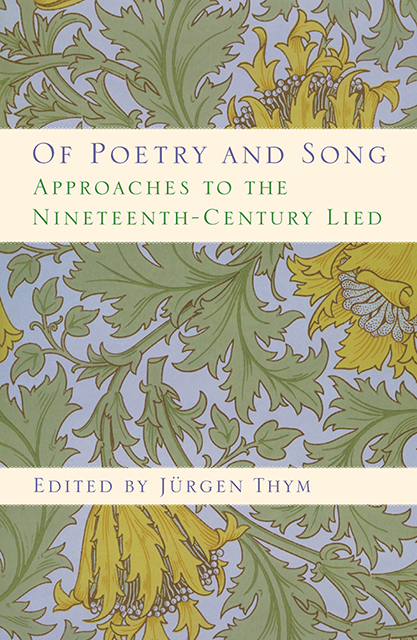Chapter Twelve - Text and Music in Mahler’s Kindertotenlieder
Published online by Cambridge University Press: 02 March 2023
Summary
Mahler's Kindertotenlieder pose questions for the analyst of text-music relations, not because correspondences between Rückert's poems and the composer's settings are so difficult to find but because they are so obvious. When analyzing Lieder, most of us take a middle position on the aesthetic question of how fully a setting can or should be analyzed as an imitation of its text. As a genre, the nineteenth-century Lied stands apart from the folk and popular songs examined by Mark Booth in his monograph The Experience of Songs in that it consists of settings of preexisting poems, which constitute their programs. On a general level, we usually have little difficulty with the idea that a setting can illustrate or express an event or a mood in a text. In fact, if a composer fails to observe a wellestablished convention of text setting, as for example by setting a witty text to a ponderous theme in a minor key, we tend to assume that he or she has either misunderstood the text or is being ironic.
On more specific levels of analysis, however, we become uneasy. Unlike some of our nineteenth- and early-twentieth-century counterparts, we tend to be hesitant to attribute denotative “meanings” to individual motives, harmonies, or themes. Just as the literary critic knows that the sound of the word “vermin” seems to match its subject only until one compares it to the word “ermine,” so does the analyst of song know that the familiar minor-second “sigh” or “pain” motive may truly seem to embody this meaning—until one encounters it in a jig. Furthermore, although we may draw attention to an obviously imitative element in a setting, we not only realize that identification of such motives does not constitute song analysis, but we recognize as well that when indeed such motives are evident, their presence may constitute a fault rather than a virtue of the setting. As James Winn remarked with respect to eighteenth-century settings in his book Unsuspected Eloquence, overly literal programmatic elements tend to be “local effects” that draw attention to themselves and in so doing prevent the listener from attending to the structure of the piece as a whole. Rather than focusing on such denotative aspects, then, we tend to direct our analytic efforts to other levels of musical and poetic structure.
- Type
- Chapter
- Information
- Of Poetry and SongApproaches to the Nineteenth-Century Lied, pp. 322 - 334Publisher: Boydell & BrewerPrint publication year: 2010



